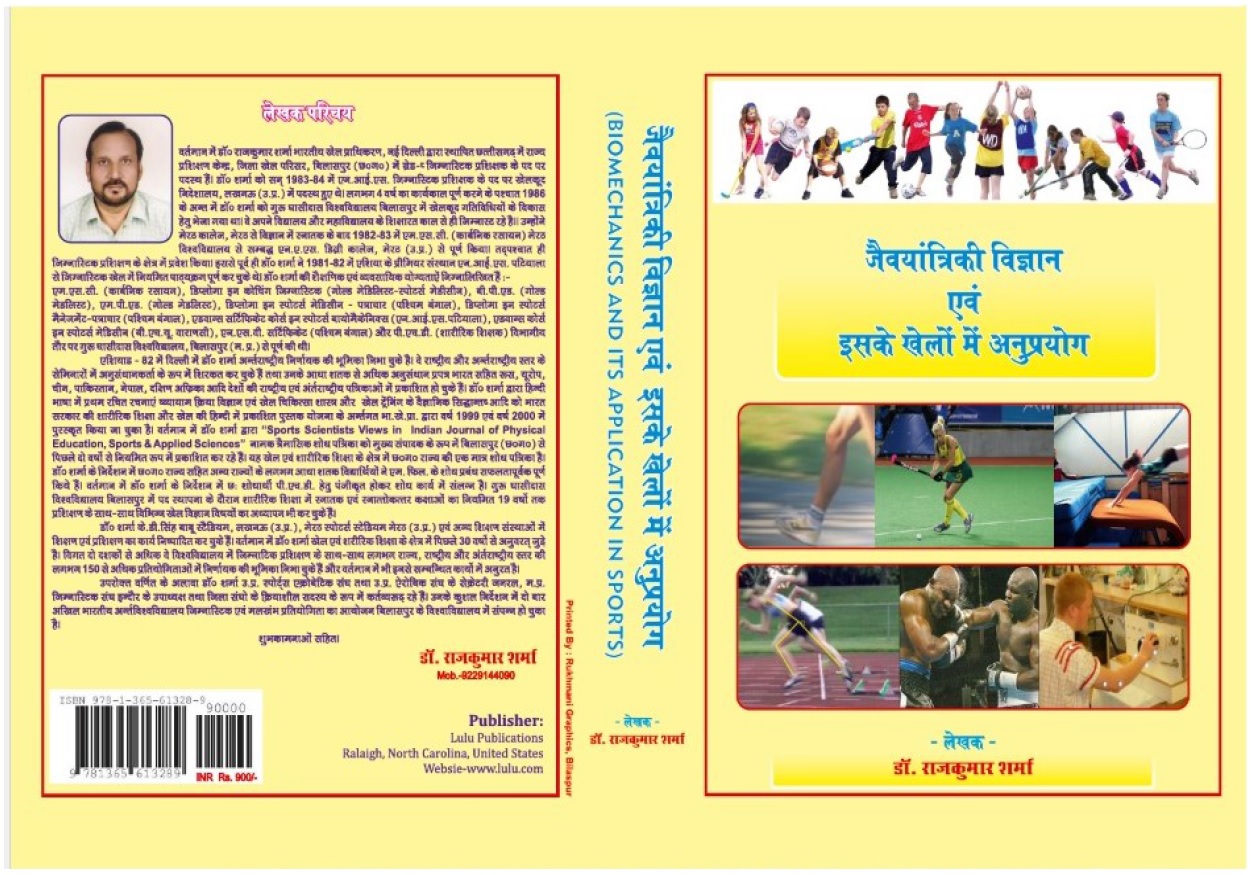| S.No. | Total View Count | Title of Manuscript | Page No | Download/ PDF |
|---|---|---|---|---|
| 1 | A STUDY ON INTENTION OF AGGRESSIVE BEHAVIOR AND GOAL ORIENTATION OF NATIONAL LEVEL KABADDI PLAYERS Author: Neetu Singh1 & Prof. R.K. Yadav2 | 37-42 |  13 13 |
Article info
doi no.: 05-2016-44975451,
DOI Link :: https://doi-ds.org/doilink/02.2022-31363648/IJPESAS/05.2016-44975451/V12/I1/A5
AFFILIATIONS:
- Research scholar, Department of Physical Education R.D.V.V. University Jabalpur (M.P.)
- Head, Department of Physical Education R.D.V.V. University Jabalpur (M.P.)
The aim of the present study was to study and compare the level of intention of Aggressive behavior and foal orientation of national level male and female kabaddi players. To attain the objective of the research 240 kabaddi players were selected as the subject. Out of 240 kabaddi players 120were female and 120 were male players participated 65th Senior National Kabaddi Championships held at Hyderabad in the Year 2017-2018. The Task and Ego Orientation in Sports Questionnaire by Duda & Whitechead, (1998) was used to assess depositions towards Task and Ego Orientation. To measure the Intention of Aggressive Behavior, a tool constructed by Buss and Perry (1992) was used. Results concluded that the male Kabaddi players are high on intention of physical aggression and verbal aggression in comparison to female Kabaddi players. Overall, the research concluded that male kabaddi players possess moderate level of are more violent than female kabaddi players. Comparative results on task and ego oriented found that male kabaddi players proved to be higher in ego orientation when compared to female kabaddi players in the present study.
Keywords: Intention, Aggressive Behaviour, Goal Orientation, Kabaddi, National Players.
References
Ames, C. (1992). Classrooms: Goals, structures, and student motivation. Journal of Educational Psychology, 84, 261-271.
Biyanwila, B., & Perera, H. (2018). Associated factors for efficient development of Scool sports system for National level sports in Sri Lanka. Basic and Applied Sciences. 11, p. 29. Colombo: General Sir John Kotelawala Defence University.
Bushman BJ, Huesmann LR. (2006). Short-term and Long-term Effects of Violent Media on Aggression in Children and Adults. Arch PediatrAdolesc Med. 2006;160(4):348–352. doi:10.1001/archpedi.160.4.348
Buss, A.H., & Perry, M. (1992). The Aggression Questionnaire. Journal of Personality and
Social Psychology, 63, 452-459
Chin, Ngien-Siong & Khoo, Selina & Low, Wah Yun. (2012). Self-Determination and Goal Orientation in Track and Field. Journal of human kinetics. 33. 151-61. 10.2478/v10078-012-0054-0.
Duda, J. L., & Whitehead, J. (1998). Measurement of Goal Perspectives in the Physical Domain. In J. Duda (Ed.), Advances in Sport and Exercise Psychology Measurement (pp. 21-48). Morgantown, WV: Fitness Information Technologies.
Dogan-Ates A. (2010). Developmental differences in children's and adolescents' post-disaster reactions. Issues Ment Health Nurs. 2010 Jul;31(7):470-6
Dufton, L., Dunn, M., & Slosky, L. & Compas, B. (2011). Self-Reported and Laboratory-Based Responses to Stress in Children with Recurrent Pain and Anxiety. Journal of pediatric psychology. 36. 95-105. 10.1093/jpepsy/jsq070.
Elliot, A., & McGregor, H. (2001). A Achievement Goal Framework. Journal of Personality and Social Psychology, 80, 501-519
Garcia-Mas, A., Olmedilla, A., Ortega, E., Almeida, P. L., Lameiras, J., Sousa, C., & Cruz, J.(2009) Cooperation and cohesion in football teams in competition. International Journal of Hispanic Psychology, 2 (1), 29-46.
Kaplan, A., & Maehr, M. (2007). The Contributions and Prospects of Goal Orientation Theory. Educ Psychol Rev, 19, 141-184.
Liu, Jianghong&Wuerker, Anne. (2005). Biosocial bases of aggressive and violent behavior—Implications for nursing studies. International journal of nursing studies. 42. 229-41. 10.1016/j.ijnurstu.2004.06.007.
Moreno-Murcia, J. A., Belando, N., Huéscar, E., & Torres, M. D. (2017). Social support, physical exercise and life satisfaction in women. RevistaLatinoamericana de Psicología, 49(3), 194–202. https://doi.org/10.1016/J.RLP.2016.08.002
Mudrak J, Slepicka P, Slepickova I. Sport motivation and doping in adolescent athletes. PLoS One. 2018 Oct 4;13(10):e0205222. doi: 10.1371/journal.pone.0205222. PMID: 30286200; PMCID: PMC6171920.
Nicholls, J. (1984). Achievement motivation: Conceptions [30]of ability, subjective experience, task choice, and performance. Psychological Review, 91, 328-346.
Perera, H. (2019). Does the Coach Leadership Behavior [41] Mediates the Influence of Factors Affecting Coach Leadership Behavioral Styles on Team Success? International Journal of Human Movement and Sports Sciences, 7(3), 51-57.
Pintrich, P. (2000). The role of goal orientation in [42] self-regulated learning. In M. Boedaerts. In M. Boedaerts, P. Pintrich, & M. Zeidner (Eds.), Handbook of self-regulation: Theory, research and applications. San Diego, California: Academic.
Scanlan TK, & Lewthwaite R. (1986). Social psychological aspects of competition for male youth sport participants: IV. Predictors of enjoyment. Journal of Sport Psychology, 1986; 8: 25-35
Stavrou, N. A. M., Psychountaki, M., Georgiadis, E., Karteroliotis, K., &Zervas, Y. (2015). Flow theory—Goal orientation theory: Positive experience is related to athlete’s goal orientation. Frontiers in Psychology, 6, 1499. https://doi.org/10.3389/fpsyg.2015.01499
Stadelmann S, Perren S, Groeben M, von Klitzing K. (2010) Parental separation and children's behavioral/emotional problems: the impact of parental representations and family conflict. Fam Process. 2010 Mar;49(1):92-108.
 admin@sportscientistsviews.com
admin@sportscientistsviews.com





